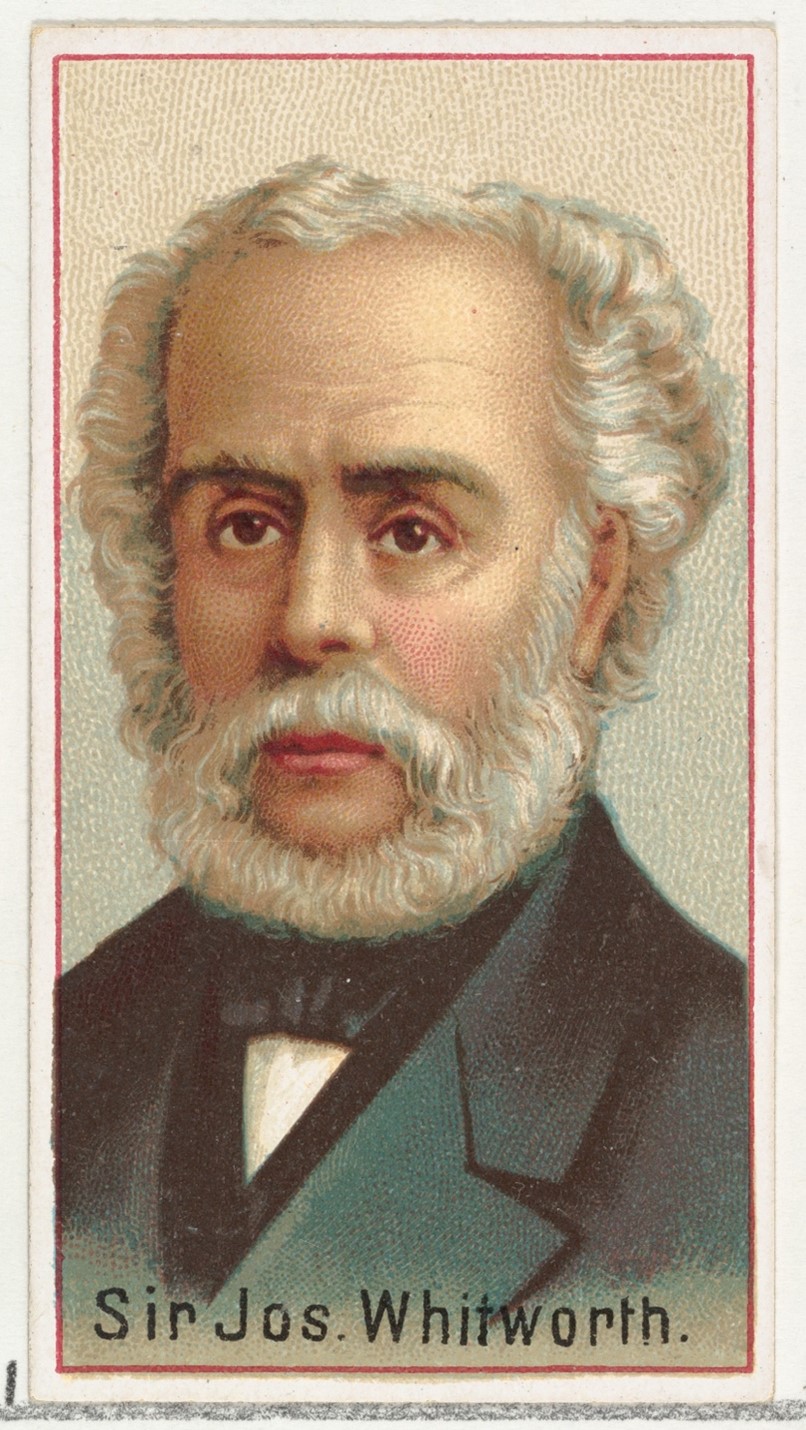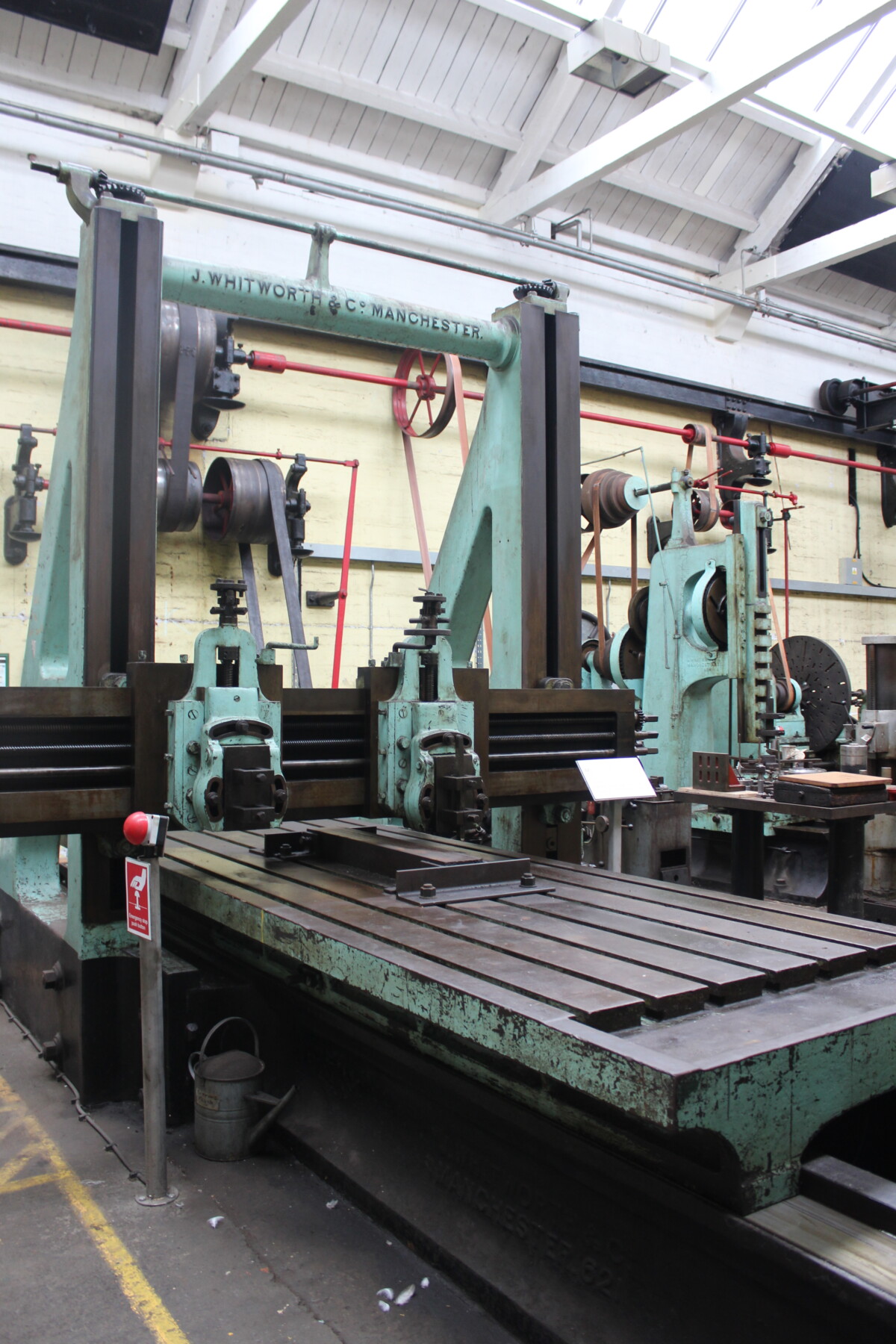Sir Joseph Whitworth (1803-1887) is a name that may be familiar to you, sitting atop the large blue-green planing machine in Underfall Yard’s Docks Maintenance Workshop. But do you know who he was? Volunteer writer Elise investigates his life and legacy…
Sir Joseph earned his fame for his creation of the British Standard Whitworth (BSW) in 1841, the world’s first official standardised screw thread. This is the pattern of grooves that wind down the length of a screw. Prior to Whitworth’s system, the distance and depth of the grooves had varied from each manufacturing house, meaning that different machines would not be compatible with parts from different companies. The creation of a standardised system revolutionised British engineering, as now there was uniformity in the basic manufacturing elements, allowing for greater stabilisation and easier replication and maintenance.

Sir Joseph Whitworth 1803-1887
The BSW gained fame after being adopted by the railway companies in order to create uniform railways throughout the country and later by the Royal Navy for their gun boats during the Crimean War. This was the first time mass production techniques had been used on marine engineering, to great success.
Whitworth also worked on a number of other machines, with his aim being to achieve higher levels of accuracy which would in turn create stronger machines and more stable engineering. Two of the machines he created were the planning and slotting machines, examples of which are in Underfall Yard’s workshop. Whitworth exhibited both of these machines – though earlier versions of the same machine- at the 1851 Great Exhibition, . where he was heralded as the first mechanical constructor of the time, and the 1871 Paris exhibition, where he was awarded one of only 5 ‘grands prix’ that were awarded to Britain
By 1866, Whitworth’s factory in Manchester was equipped with over 600 machines, he had invented a new method of casting ductile steel which replaced – the ironically more fragile – hard steel and in 1868, Whitworth had set up the Whitworth scholarship scheme at Owens College for aspiring engineers. He was made a Baron in 1869 for his numerous and seismic contributions to industry.
But how and why did Whitworth create this standard screw thread, and what does this have to do with Underfall Yard?
Whitworth was based in Manchester, but Whitworth’s name is ascribed to the large planing machine (1884) and the slotting machine (1884), both of which are important parts of the Yard’s history.
One of Whitworth’s first great discoveries was his method of creating the true plane in the 1830s. After his marriage to Fanny Ankers in 1825, Whitworth moved to London to work under Maudslay, Sons and Field. It was here that he set about perfecting the planers in order to gain greater accuracy and uniformity in the workshop. In 1887, Whitworth described his method of achieving this as:
“Taking two surfaces, as accurate as the planing tool could make them, I coated one of them thinly with colouring matter, and rubbed the other over it. Had the two surfaces been true, the colouring matter would have spread itself uniformly over the upper one. It never did, so, but appeared in spots and patches. These marked the eminences, which I removed with a scraping tool till the surfaces became gradually more nearly coincident. But the coincidence of two surfaces would not prove them to be planes. If one were concave and the other convex, they might still coincide. I got over this difficulty by taking a third surface, and adjusting it to both of the others… By a series of comparisons and adjustments I made all three surfaces coincide and then, and not before, know that I had true planes.”
(Manchester Times – Saturday 29th January 1887)
These true planes were then used to recalibrate the machines, so they could be precisely produced en masse. But, in order to do this, there needed to be a standard of measuring that was adjustable in order to create the different levels of the true planed surface. Enter: The British Standard Whitworth.
Whitworth used his true planes to create a system, arranging two parallel surfaces, one of which can be moved nearer to or further from the other by the means of a screw. The turns of the screw measure the distance that the plane is moved to or from the other, creating a high level of accuracy in the process. Whitworth’s screws have twenty threads to the inch (20 groves within the spiral) this allows for the incredible accuracy with some of Whitworth’s measuring machines (used in the planer) being able to gauge fractions smaller than 1 millionth of an inch.
 Whitworth’s machines were power driven, ours at the Yard is driven by the belt drive, creating greater speed and strength. This machine was an important part in the manufacture and maintenance of the yard as it was “used mainly for machining sluicegates and guides, frames of various kinds and railway-point switches”(BIAS) ensuring the same uniformity and structure Whitworth owed his reputation to.
Whitworth’s machines were power driven, ours at the Yard is driven by the belt drive, creating greater speed and strength. This machine was an important part in the manufacture and maintenance of the yard as it was “used mainly for machining sluicegates and guides, frames of various kinds and railway-point switches”(BIAS) ensuring the same uniformity and structure Whitworth owed his reputation to.
“This power-driven planing machine drives a cutting tool over the workpiece, removing a small amount of metal in a straight line. It then steps the cutter to one side, machining overlapping cuts until the entire surface has been covered.”
(Science Museum)
While our planing machine is not the original Whitworth planer which resulted in his creation of the Whitworth system, it employs the same principles and is one of few remaining working planers installed in Whitworths lifetime.
This article was researched and written by volunteer writer Elise Maynard and edited by Underfall Yard Trust. The yard’s Whitworth Planer can be visited during our regular Yard in Action events.
The Recovery and Reinstatement Project is now underway after the fire in May 2023. Click here to read more and find out how to support the project…
